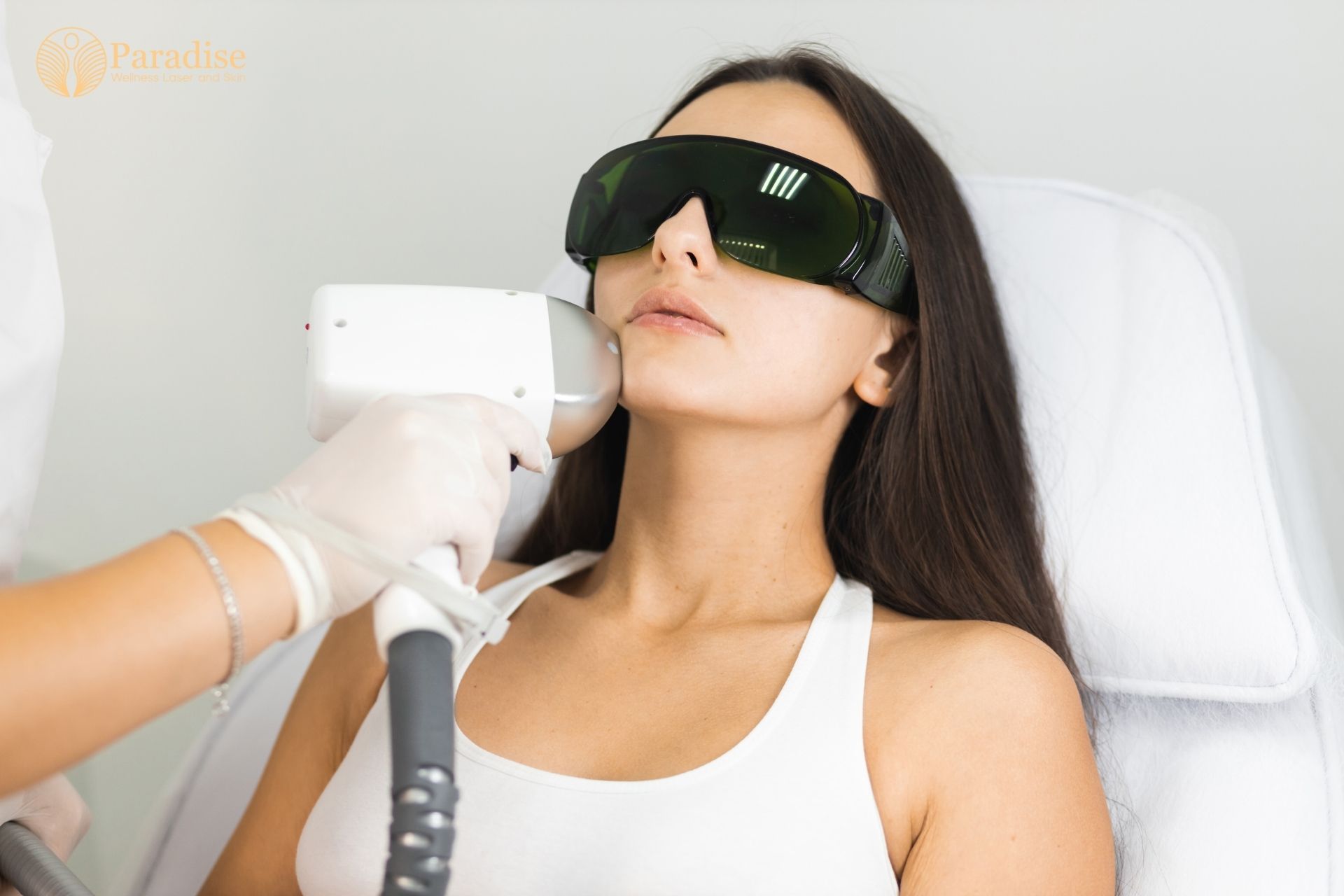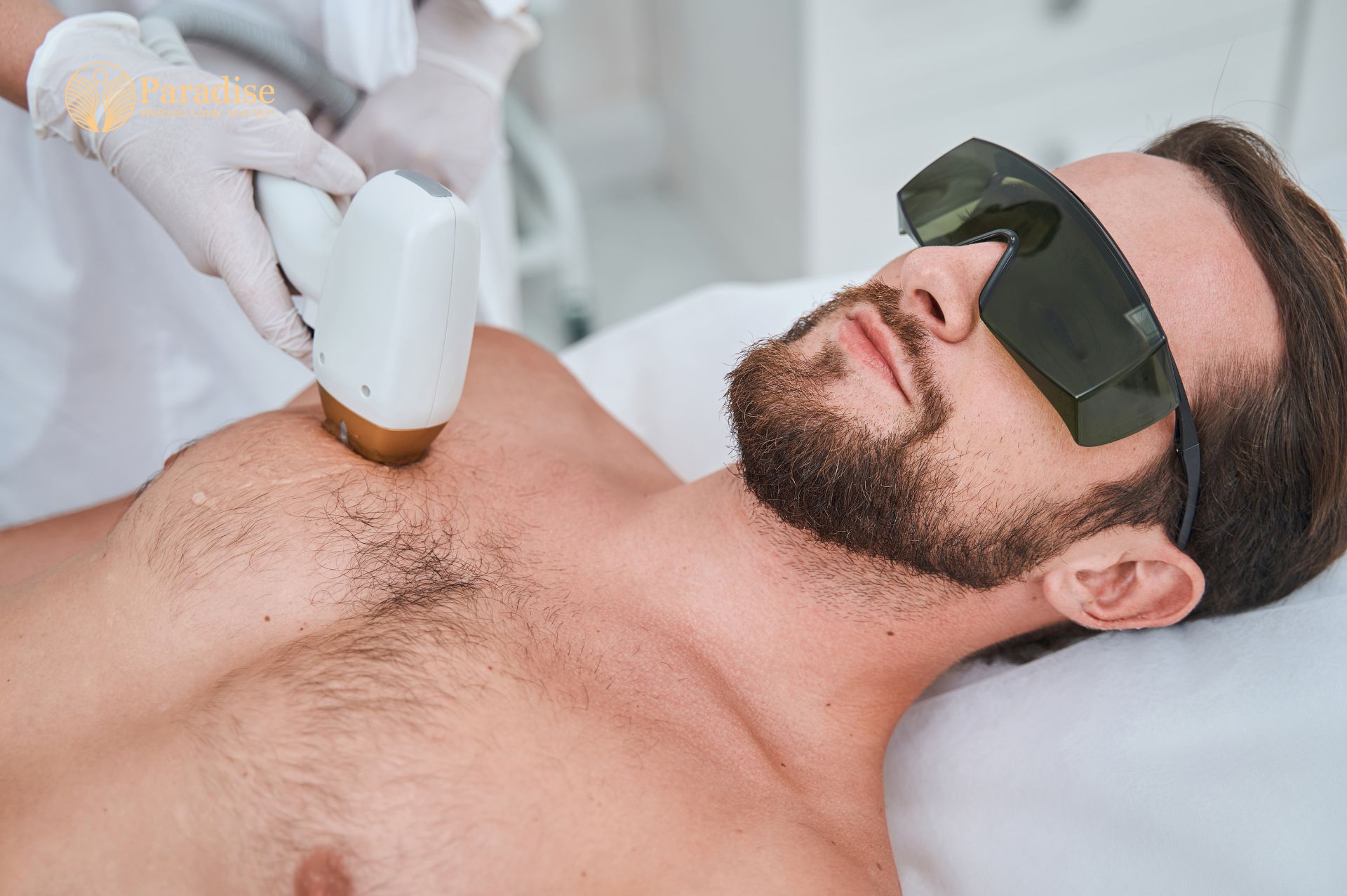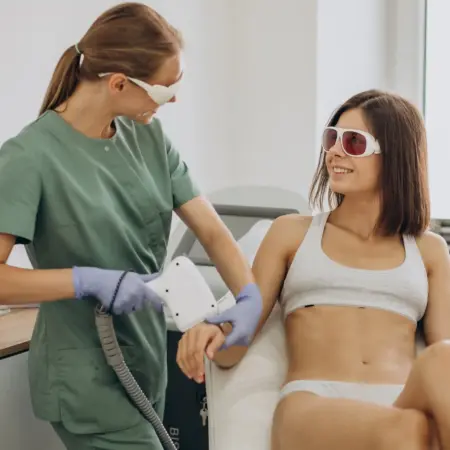Far beyond the world of razors and waxing strips, a quiet revolution is underway. Laser hair removal has become the go-to solution for anyone looking to enjoy a smooth, hair-free life—without the constant upkeep. From celebrities to skincare experts, everyone’s talking about this advanced treatment that offers long-lasting results and convenience.
But how long does it really take for laser hair removal to work? Let’s break it down. From underarms to bikini to full body laser hair removal, the timeline may vary based on your skin type, hair density, and the technology used.
Introduction
If you’re Googling “how many sessions for laser hair removal” or “how fast does laser hair removal work,” you’re not alone. It’s one of the top non-surgical cosmetic treatments globally. The good news? You’ll start seeing results after just a few sessions. However, a full course usually takes 6 to 8 sessions spaced around 4 weeks apart.
Whether it’s facial hair or body hair, the timeline depends on your skin tone, hair type, and the technology used—like Alma Soprano Titanium, triple wavelength, or US-FDA-approved pain-free devices offered at Paradise Wellness.
Because not all your hair grows at the same time, multiple sessions are needed to catch each follicle in the right growth phase. Typically, 6 to 8 sessions spaced 4 to 6 weeks apart are ideal for best results.

Laser hair removal is a highly effective method for long-term hair reduction. It works by targeting hair follicles with concentrated light, leading to a significant decrease in hair growth over multiple sessions.
Dr. Surabhi Sharma
Dr. Surabhi Sharma, a certified dermatologist at Paradise Wellness Clinic, stresses the importance of undergoing laser treatments at certified clinics. At Paradise Wellness, all procedures are performed with FDA-approved, medical-grade lasers, and strict hygiene protocols. Her expertise ensures clients get safe, effective, and personalized treatments.

Laser hair removal is a game-changing solution for those tired of traditional hair removal methods. Using advanced diode and triple wavelength technology, the treatment targets hair follicles during their active growth phase to deliver long-lasting smoothness. Most clients begin to see visible reduction by the 2nd or 3rd session, with up to 90% permanent hair reduction achieved after 6 to 8 sessions, spaced 4–6 weeks apart.
Results Timeline: What to Expect After Each Session
| Session No. | What Happens |
| Session 1 | Initial shedding, smoother skin in a few days |
| Session 2 | Noticeable slower regrowth, patchy hair presence |
| Session 3 | Up to 40% hair reduction; finer regrowth |
| Session 4-5 | 60–80% visible reduction, lighter and thinner hair |
| Session 6-8 | Up to 90% reduction, very minimal regrowth |
Some clients may need touch-ups every 6-12 months, especially in areas influenced by hormonal changes, like the face or underarms.
Key Factors That Influence Your Results
1. Hair Type & Color
Dark, coarse hair absorbs laser energy best. Blonde, red, or grey hairs may not respond as effectively, but newer laser technologies are closing the gap.
2. Skin Tone
Earlier lasers only worked on light skin, but modern machines like diode or triple wavelength lasers can treat all Fitzpatrick skin types (I to VI) safely.
3. Hormonal Health
Conditions like PCOS or thyroid imbalance may require more sessions or ongoing maintenance.
4. Area Being Treated
Facial areas often need more frequent sessions than body areas like the legs or back due to shorter hair growth cycles.
5. Technology Used
Advanced machines with built-in cooling systems offer painless laser hair removal and enhance efficacy while minimizing risks.
Why Choose Laser Hair Removal Over Other Methods?
- Permanent Hair Reduction: Up to 90% reduction in unwanted hair.
- No More Ingrowns: Say goodbye to bumps and inflammation.
- Smooth, Even Skin Tone: Especially beneficial for people prone to pigmentation or razor burns.
- Time-Saving: Full body sessions take 1.5–2 hours vs. weekly waxing or shaving.
- Cost-Effective Long Term: No need to spend monthly on waxes, razors, or depilatory creams.
Myths vs. Facts: Clearing the Confusion in Laser Hair Removal
| Myth | Fact |
| Laser hair removal is painful | Nope! New machines are nearly painless, like a cool tingling sensation |
| It only works on fair skin | False. We treat all Indian skin tones safely and effectively |
| Results are instant | You’ll need a few sessions—but results are long-term and worth it |
| It causes skin cancer | Totally false. Laser targets melanin in hair, not DNA or skin cells |
| You can’t do it in summer | You can! As long as you wear sunscreen and follow aftercare steps |
Investing in laser hair removal means choosing a long-term solution that saves you time, reduces irritation, and offers lasting smoothness. It’s a testament to how far cosmetic treatments have come, providing effective and convenient alternatives to traditional hair removal methods.
Conclusion
Laser hair removal isn’t an instant magic wand—but it’s undeniably one of the most effective, time-saving, and skin-friendly treatments for long-term hair reduction. If you’re ready to ditch razors, cancel your waxing appointments, and enjoy freedom from body hair, now’s the time to invest in your skin.
Don’t just follow the trend—experience the transformation. Whether it’s for confidence in your daily outfits, smoother underarms, or full body prep for a beach vacation, our laser hair removal services are tailored for today’s fast-paced lifestyle.
Sushma Paasi
Common Laser Hair Removal Questions—Answered
-
Q: How soon will I start seeing results?
A: Most people notice smoother skin and reduced hair growth after the first session. Major changes appear by session 3 or 4.
-
Is laser hair removal painful?
A: Not at all! Our diode lasers have a built-in cooling head, making it feel like a warm massage.
-
Q: Can it be done on all skin tones?
A: Yes, with our triple wavelength and diode technology, we treat all skin types safely and effectively.
-
Q: Are there any side effects?
A: Temporary redness or mild swelling is common and subsides within hours. Our dermatologists do a full skin analysis before beginning.









